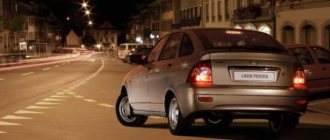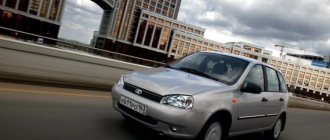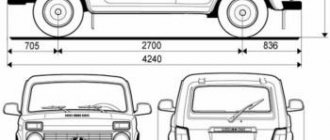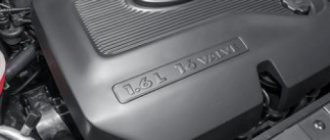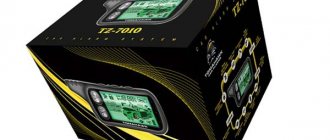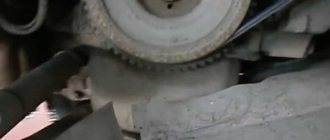History of creation
The VAZ 2115 car with various types of modifications was produced in a number of models of the automobile plant on the Volga as a restyled version of the outdated VAZ 2108 series. By 2005, the level of convenience that can provide samples included in the VAZ 2108 series, with an ever-increasing number of foreign cars production, ceased to be capable of competition. For this reason, they decided to produce a restyled family of cars with the body in the same condition. This series of models should have been in line with the VAZ samples in terms of cost after the classic versions were finally discontinued.
Special points of the car from the technical side
Sample number fifteen with modifications is produced with a similar body, but with modified hinged panels, like the trunk lid, fenders, hood and other parts.
The interior design of the VAZ 2115 has changed quite significantly in comparison with the initial line with front-wheel drive. The panels, ceiling surface, doors, instrument panel and the instruments themselves became new. All this was modernized in order to fit into the new model.
The VAZ 2115 engine was initially installed similar to the one on the 2108 - with eight valves and an engine with a fuel distribution system in the transverse plane. In 2007, engine capacity was increased to 1.6 liters. Complete with an updated engine, the machine complies with European requirements.
In 2010, in a not very large number of samples of this series, they began to install an engine with sixteen valves VAZ-21124, which has a power value of ninety horsepower from the VAZ-2110 and VAZ-21126 (ninety-eight horsepower), which was boosted from the Lada Priora. With such engines, the optimal speed according to the car’s passport is one hundred eighty-five kilometers per hour.
Sample modifications
Similarly, as in the early 2108 series, the car is produced in three modifications. In addition to the hatchback with three doors, the automobile plant produces the VAZ 2114, which replaced the VAZ 21093. The 2114 differs from the previous model in the body part at the front - it is equipped with block headlights, PTF, a modified hood, fenders, radiator grille, other plastic bumpers, moldings and a spoiler are installed. , having a color similar to the body color.
Production of the VAZ 2115 began in 2000, simultaneously with the old VAZ 21099, and since 2004 it has become an absolute replacement for the “Ninety-Ninth” on the assembly line. Initially, they planned a complete modernization of the new generation of cars. However, as a result, only the body panels from the outside, that is, the exterior of the car, were altered.
Each technical unit remained almost unchanged. This made it possible to obtain a high degree of unification and make production cheaper on the one hand. However, all the shortcomings of the ninth row remained.
- Years of production: from 1997 to 2012
- History of creation
- Design and construction
- Modifications
- Car photos
- Car video
- Specifications
History of creation
The very first representative of the family of cars with the code name “Samara-2”, the front-wheel drive sedan VAZ-2115, was developed to replace the VAZ-21099 sedan and, in fact, was its deep modernization. In general, the idea of modernizing cars of the Samara family, which includes the VAZ-21099 sedan and VAZ-2108 and VAZ-2109 hatchbacks, began almost immediately after the start of their serial production. The plans were grandiose, but at that time all efforts were devoted to the development of cars of the “tenth” family (VAZ-2110/11/12) and there was no time to modernize the Samara.
Let's sum it up
This model is unpretentious to use, it is easy to repair, and the parts are cheap. The technical characteristics and design of the car almost immediately attracted the interest of the younger generation of car enthusiasts. The most problematic place, according to drivers, is the stove.
After its appearance, the VAZ-2115 opened up great opportunities for fans of tuned cars. Almost everything in a car can be modified. In addition to the usual transformation of the appearance, craftsmen are engaged in tuning the engine, suspension, and brakes. After all the work has been carried out, it can be difficult to make out what brand the car was, since sometimes only the “original” body may remain from the car.
Buying a VAZ-2115 car (price varies within 100 thousand rubles) is available to everyone, but only on secondary markets. Therefore, purchasing such a car will not be difficult.
Design and construction
On the updated appearance of the VAZ-2115, car designers worked directly in the wind tunnel; work began with the bumpers, which were initially made of plasticine and blown in a wind tunnel. As a result, compared to its predecessor, the VAZ-2115 received rounded and more attractive bumpers, both front and rear. In addition to the bumpers, almost all body parts were brought to a modern look. The car has become rounder with softer features.
In the front of the car, one immediately notices the narrower, seemingly squinted headlights, a different shaped hood, a different radiator grille and a bumper with fog lights built into it. In addition, the rear part of the car has changed and been completely redesigned (unlike the VAZ-2113 and VAZ-2114 hatchbacks). The trunk of the sedan has become somewhat larger, and its loading height, on the contrary, has decreased by 20 centimeters; a different shape of the trunk lid and bumper also has a positive effect on the appearance of the rear. To complete the composition, it is worth noting the new rear lights, which are combined into a single strip.
Compared to its predecessor, the body of the VAZ-2115 car also changed; it became 22.5 centimeters longer, and there were linings on its sides, first wide, and starting from 2007, narrow. But neither the roof nor the doors were changed.
Inside the car, a new panel with a combination of instruments from cars of the “tenth” family immediately catches the eye; from the same family, the VAZ-2115 received an adjustable steering wheel. The display unit of the on-board control system contains information about unfastened seat belts, brake pad wear, open doors, oil level, coolant and washer fluid. The car received front power windows and a new, more efficient interior heater.
As a power unit, the first VAZ-2115 cars (pilot production batch, which was produced from 1997 to 2000) received a V8 carburetor engine with a volume of 1.5 liters and a power of 71.6 horsepower. Production cars were no longer equipped with a carburetor engine; they were equipped with a VAZ-2111 injection engine with a volume of 1.5 liters and a power of 77 horsepower. Since the start of mass production, neither the appearance nor the technical content of the car has undergone any major changes until 2007. It was then that the first serious restyling of the car took place. The instrument panel has changed, an on-board computer has appeared on it, the engine has become more powerful and complies with the Euro-3 environmental class, wide moldings have been replaced by narrow ones, and there were other less noticeable changes, including in the chassis.
New items
The VAZ-2115 was part of the Lada Samara line of cars, and it was called a follower of the VAZ-21099. Of course, a lot remained from the “ninety-ninth”, but innovations did not bypass the model. The engineers at the factory did a good job and improved the electronics in the car. It came off the assembly line already equipped with power windows, which were now electric and eliminated the need for the driver to turn a handle to raise the window. Fog lights were also added. The VAZ-2115 stove deserves special attention. Judging by the reviews of owners of domestic cars, it was this device that was the weak point. In this direction, the manufacturer made several changes, which led to better performance of the device. However, problems were still observed.
A new control system was provided for all cars. With its help, the driver could monitor the condition of his car without leaving his seat. That is, it was possible to monitor the quality of the lamps, oil level and much more. This helped to immediately identify a specific breakdown, after which it was replaced. The VAZ-2115 with such equipment currently does not look special, since on-board computers are installed on other models. However, at that time (after all, almost 20 years had passed), this was precisely what distinguished it from other models of the Lada line.
Modifications
VAZ-2115
The very first car that was produced since 1997. It was equipped with a 1.5-liter carburetor engine producing 76 horsepower. The maximum speed was 165 km/h, and the acceleration time from 0 to 100 km/h was 13.2 seconds.
VAZ-21150
The next modification, released in 1998, was equipped with a 1.5-liter carburetor engine producing 68 horsepower. was discontinued in 2000.
VAZ-2115-20
A modification of the car released in 2000, equipped with a 1.5-liter VAZ-2111 injection engine with a power of 77.8 horsepower. The maximum speed was 170 km/h, and the acceleration time from 0 to 100 km/h was 14 seconds.
VAZ-2115-40
A modification with a 1.6-liter injection engine, which has been produced since 2003. The car's maximum speed was 158 km/h, and the acceleration time to 100 km/h took 13.2 seconds.
VAZ-2115-91
A car with a 1.3-liter Wankel rotary piston engine producing 135 horsepower. The maximum speed is 190 km/h, and the acceleration time to 100 km/h is 9 seconds.
VAZ-21154
The latest modification of the car with a new VAZ-11183 engine with a volume of 1596 cm 3 and a power of 81 horsepower. Produced since 2007. The maximum speed and acceleration time to 100 km/h are exactly the same as that of the VAZ-2115-40.
Technical characteristics of VAZ-2115
| Total information | VAZ-2115 | |
| Dimensions, mm: length, mm width, mm height, mm | 4330 1650 1420 | |
| Base, mm | 2460 | |
| Front track, mm | 1400 | |
| Rear track, mm | 1370 | |
| Ground clearance, mm | 165 | |
| Turning radius, m | 5,2 | |
| Curb weight, kg | 985 | |
| Total weight, kg | 1410 | |
| Load capacity, kg | 425 | |
| Acceleration time 0–100 km/h, sec. | 14,2 | |
| Maximum speed, km/h | 158 | |
| Fuel | AI-95 | |
| Fuel capacity, l | 43 | |
| Fuel consumption (EU 99/100), l/100 km: at a speed of 90 km/h at a speed of 120 km/h urban cycle | 5,7 7,8 8,9 | |
| Body | ||
| Body type | sedan | |
| Number of doors | 4 | |
| Number of seats | 5 | |
| Trunk volume (VDA), l | 430 | |
| Engine | ||
| Location | front transverse | |
| Configuration | P4 | |
| Number of valves | 8 | |
| Working volume, cubic cm | 1499 | |
| Supply system | distributed injection | |
| Neutralizer | There is | |
| Toxicity standards | Euro 2 | |
| Compression ratio | 9,8 | |
| Power, kW/hp at rpm | 56,4/76,7 5400 | |
| Torque, N*m at rpm | 115,7 3000 | |
| Transmission | ||
| Type | front-wheel drive | |
| Transmission | M5 | |
| Chassis | ||
| Front suspension | McPherson type | |
| Rear half-link | elastic beam | |
| Steering | rack and pinion | |
| Front brakes | disk | |
| Rear brakes | drums | |
| Tire size | 165/70R13, 175/70R13 | |
| Equipment | Standard | Lux |
| Rear window defroster | There is | There is |
| Power windows for front doors | There is | There is |
| Heated front seats | No | There is |
| Immobilizer | There is | There is |
| On-board computer | No | There is |
| Fog lights | There is | There is |
| Exterior mirrors | with anti-glare effect | with anti-dazzle effect and electric drive |
| Seat upholstery | tweed | velvet |
| Vegetable padding on the front seat backs | There is | There is |
| Trunk spoiler with brake light | There is | There is |
| Tinted windows | No | There is |
Which engine is better: 1.5 liter 8-cl. or 1.6 l 8-cl?
When choosing a car, people often ask the question: “Which engine is better?” In our case, everything is not so simple. A similar question may arise if we consider buying a car from already “shaggy” years: 2006-2007. It was during this period that VAZ-2113, 2114 and 2115 were equipped with both 1.6 liter and 1.5 liter engines, the characteristics of which are outlined above.
In fact, they are no different, except for volume, exhaust standards, fuel supply systems and a pair of sensors. Therefore, the main distinguishing point is the engine size. A difference of 0.1 liters gives more torque from the bottom, adds a little maximum power and, perhaps, the same or even lower fuel consumption than 1.5 liters. The only negative is that it is noisier at idle.
Previously, in the years 2008-2012, people were reluctant to buy 1.6 liter models, saying they were loud, prone to breakdowns, etc. In fact, it is superior to the 1.5 liter engine in all respects. Accordingly, we recommend it to you. But this applies to 8-grade students. motors that were installed serially. Next, let's look at 16-cl.
Changes to the car compared to its predecessor
In the updated model, not only the external part of the car has radically changed, but the interior has also been significantly updated.
External differences from its predecessor:
- Bumper . The bumper became higher and was painted in body color, like foreign cars; before it, the 10, 11 and 12 models could boast of this.
- Headlights . The headlights became smaller and more rounded, and the optics themselves were quite modern at that time.
- Rear spoiler . Some trim levels were equipped from the factory with a small spoiler that did not differ in color from the car.
- Radiator trim and hood . The hood also differed favorably from its angular predecessor with its rounded shape, which made the 2114's design quite fresh.
- Wings . Slots for turn signals appeared in the wings and, in general, they began to integrate more advantageously into the overall appearance of the car.
- Side skirt fairings . The sills began to be covered with plastic covers and painted the same color as the body.
- Moldings . The moldings go along the doors and are in turn painted to match the color of the car's body.
Are VAZs still produced today?
Do VAZ now produce cars under their main brand? As you know, after the global economic crisis, the company came under state control, as it owed its investors about 14.5 billion rubles. Officials decided to subsidize the concern and provide an interest-free loan of 60 billion (through Russian Technologies). At the moment, Renault owns 50% of the shares (minus 1 share). The remaining share is from Russian investors and Nissan.
AvtoVAZ in the 2000s and later
Since the 2000s, sales of VAZ cars have been sharply declining due to the opening of foreign concerns that offered consumers more reliable and modern cars at relatively affordable prices. The management team again decides to update the model range. All subsequent cars did not gain popularity among potential consumers. The only exception is the VAZ-2114, which is still considered by many to be almost the best vehicle in the entire history of AvtoVAZ.
Until what year was the VAZ 2114 produced: a brief history of the model
VAZ 2114 is a favorite car produced by the Lada concern, which is part of the Samara-2 family. The history of the VAZ 2114 began when the public saw the first models in 2001, then 50 test copies were produced. Full-scale production of the VAZ 2114 started in April 2003, and the last production of the VAZ 2114 was recorded on December 23, 2013.
The fourteenth model replaced the well-known VAZ 2109, called the “nine”, it lasted on the assembly line for seventeen long years from 1987 to 2004, but until 2011 it was assembled in Ukraine from kit cars. Little has been preserved from it in the form of the restyled VAZ 2114.

